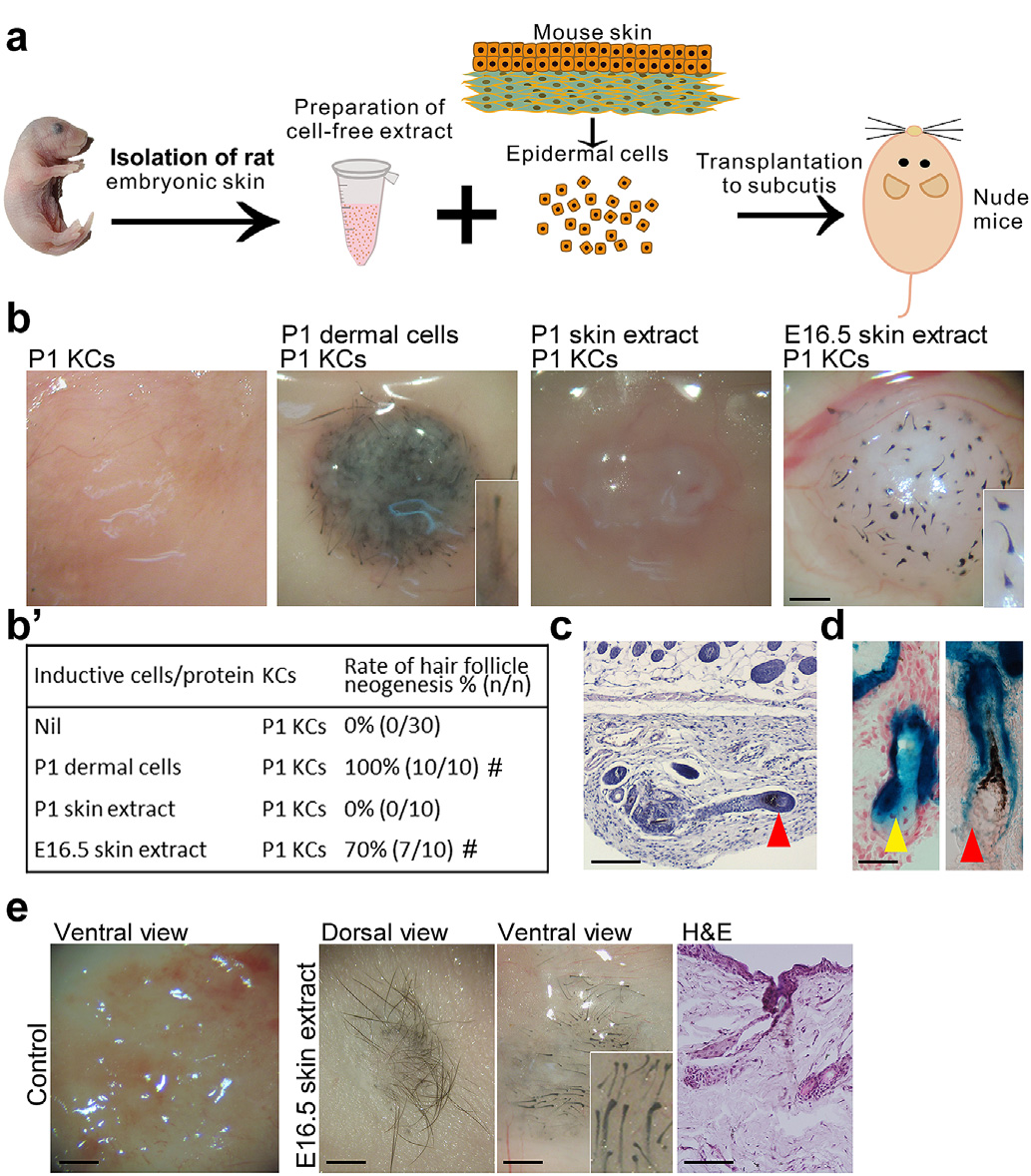利用胚胎皮肤内富集的分泌型蛋白诱导毛囊再生
Biomaterials2018, 167, 121-131 器官发育是一个复杂的过程。虽然人们对于器官发育的机制已经有了越来越多的了解,但是对于其与组织再生之间的关系却知之甚少。 台湾国立大学的Sabrina Mai-Yi Fan等发现,利用胚胎皮肤的细胞内提取物对成体无毛皮肤的成纤维细胞进行处理,可以使其获得促进毛囊再生的能力。通过蛋白组学,该小组从胚皮提取物中筛选出了三种在胚胎发育特定时期富集于胚胎毛囊周围的分泌型活性蛋白,分别为apolipoprotein-A1, galectin-1和lumican。这三种通过协同作用,共同诱导毛囊新生。经过胚皮提取物或这三种活性蛋白共同处理的成纤维细胞呈现出向毛囊真皮乳头成纤维细胞转化的趋势,而这一过程主要是通过igf和Wnt两条信号通路实现的。这一研究为利用胚胎特定组织提取物促进组织再生提供了新思路。 Organ development is a sophisticated process of self-organization. However, despite growing understanding of the developmental mechanisms, little is known about how to reactivate them postnatally for regeneration. Sabrina Mai-Yi Fan et al. from National Taiwan University found that treatment of adult non-hair fibroblasts with cell-free extract from embryonic skin conferred upon them the competency to regenerate hair follicles. Proteomics analysis identified three secreted proteins enriched in the embryonic skin, apolipoprotein-A1, galectin-1 and lumican that together were essential and sufficient to induce new hair follicles. These 3 proteins show a stage-specific co-enrichment in the perifolliculogenetic embryonic dermis. Mechanistically, exposure to embryonic skin extract or to the combination of the 3 proteins altered the gene expression to an inductive hair follicle dermal papilla fibroblast-like profile and activated Igf and Wnt signaling, which are crucial for the regeneration process. Therefore, a cocktail of organ-specific extracellular proteins from the embryonic environment can render adult cells competent to re-engage in developmental interactions for organ neogenesis. Identification of factors that recreate the extracellular context of respective developing tissues can become an important strategy to promote regeneration in adult organs. (武振旭) |
